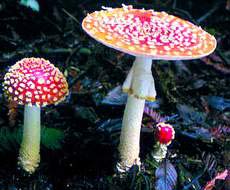Potato Sprout Poisoning
 |
Potatoes (Photo: Tien Phong) |
When potatoes sprout, they can produce solanine toxins, with concentrations reaching up to 1.34g/kg; the average in the potato flesh is 0.04-0.07g/kg and in the skin is 0.03-0.55g/kg. Solanine levels of 0.2-0.7g/kg body weight can cause fatal poisoning.
Preventive Measures: Avoid eating sprouted potatoes, especially for children. If consumption is desired, ensure that all sprouts are removed, soaked in water, and thoroughly washed.
Poisoning from Cassava
All cassava contains glycosides that produce hydrogen cyanide (HCN), but bitter cassava has higher levels (6-15mg/100g) compared to regular cassava (2-3mg/100g), with uneven distribution within the tuber.
The skin, core, and ends of the tuber typically have the highest concentrations (15-20mg%). The edible flesh of cassava has a concentration of about 9mg%. A lethal dose is approximately 1mg/kg body weight. Children, the elderly, and the weak are more sensitive. To prevent poisoning, cassava should be peeled, soaked in water, and boiled thoroughly. Avoid eating cassava that tastes bitter or cassava grown in unfamiliar soil. Cassava that is harvested late often contains more toxins.
Poisoning from Bamboo Shoots and Toxic Beans
Bamboo shoots also contain glycosides that produce hydrogen cyanide, distributed evenly in the edible parts of the shoots.
Certain legumes, such as cat beans and kidney beans, also contain significant amounts of glycosides that produce hydrogen cyanide.
Preventive Measures for the Above Cases: Soak in water for a long time, wash thoroughly, and boil discarding the water to eliminate glycosides.
Poisoning from Consuming Toxic Mushrooms
 |
Toxic Mushrooms (Photo: VNN) |
In our country, among the natural edible mushrooms, there are also some toxic varieties such as: Death Cap (Amanita phalloides), Destroying Angel (Amanita verna), Luminescent Mushroom (Pleurotus sp.), Fly Agaric (Amanita muscaria), and Rosy Mushroom (Russula emetica); which often contain toxins like muscarine, phallin, phalloidin, amanitin, causing poisoning 1-6 hours or even 9 hours after consumption. The mortality rate is quite high due to the toxins entering the bloodstream.
Preventive Measures: Only consume mushrooms that are well-known. Publicly educate people about edible and toxic mushrooms, as well as safe harvesting methods. Avoid using any suspicious mushrooms. It is important to note that fresh edible mushrooms, if not stored properly or if damaged, can also cause poisoning.
Moreover, it has been documented that there are thousands of plant species on Earth that contain toxins, but some can still be eaten if their toxins are eliminated or reduced through certain methods:
– Choose the right time to harvest to reduce toxin levels.
– Select less toxic varieties. Many species reduce their toxicity when cultivated from their natural habitat to gardens, such as wild cat beans being more toxic than cultivated ones.
– Choose proper processing methods, such as soaking in water, changing the water multiple times, salting, washing, pickling, and applying heat (like soaking cassava before boiling)…
– Use the less toxic parts of the plant (in some plants, seeds often contain higher cyanide levels, such as the seeds of various legumes which are highly toxic).
The absorption and accumulation of plant toxins in animals vary significantly. Therefore, the meat of animals that consume toxic plants can also easily cause poisoning in humans, similar to fish living in areas with abundant Strychnine seeds; fish that eat Strychnine do not die, but humans who eat the fish may get poisoned.


















































